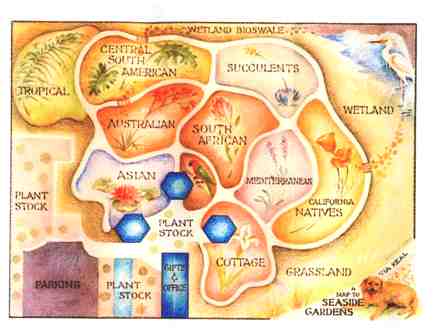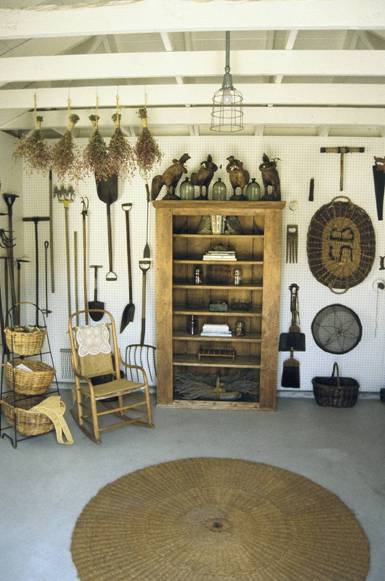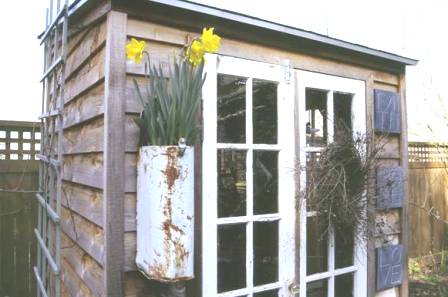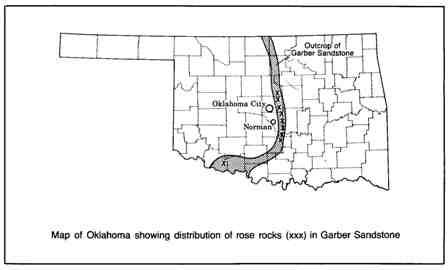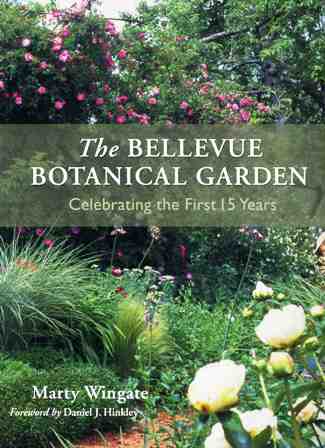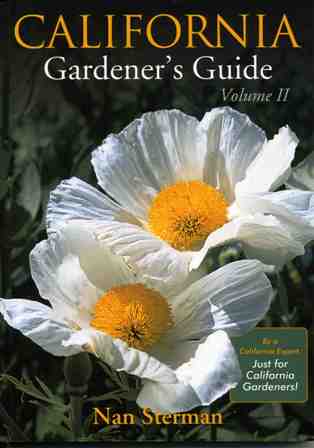Last week’s posting on Shed design tips yielded response from two of the U.K.’s shed experts who have their own awesome blogs. I first discovered Readersheds last spring, while working on “Stylish Sheds and Elegant Hideaways,” my book project.
So it is with great delight that I can share the first of two Q&As with my British Shed Pals. Appearing here is my email conversation with the “Prince of Sheds,” aka Uncle Wilco. Uncle Wilco runs a popular web site: www.readersheds.co.uk (he blogs at shedblog.co.uk).
Q. Please share your bio with us:
 A. I am Uncle Wilco and I am a sheddie. I’m 36 and I live near Pontypridd (where singer superstar Tom Jones comes from ) in South Wales in the U.K. I’m not sure if Tom has a shed; I’ve never had a reply from him. But I love sheds!
A. I am Uncle Wilco and I am a sheddie. I’m 36 and I live near Pontypridd (where singer superstar Tom Jones comes from ) in South Wales in the U.K. I’m not sure if Tom has a shed; I’ve never had a reply from him. But I love sheds!
Q. When/how did you launch readersheds.co.uk?
A. Readersheds started as an idea in early 2000. I was looking for information about building a garden shed, but could not find much online, so I thought I might as well start a website, where people “shared their sheds” and told us how they went about it.
Ironically, the shed I went with in the end was ordered online and I just erected it instead of building from scratch. But the idea for “readersheds” had started and it just took on a life of its own! The shedblog.co.uk came later, but has been great in promoting Shed Week (details on this below)! And my general musings on shed-related matters.
Q. What was your first introduction to a shed? Did you grow up with a tool shed or potting shed in your backyard?
A. My grandfather (who turned 90 in November) used to have a big allotment garden in the Welsh Valleys. There he used to grow vegetables – and of course (it) was a place the men used to go to escape the wife!
All the allotmenters had sheds they built from scrap wood and anything else they could find. They were recycling before it was fashionable. I used to spend a lot of time there when I was younger. I don’t recall my parents having a shed, but my dad had a garage converted into a wood-shop, so the idea was there!
Q. Please describe your own shed.
 A. I have two. Technically, one is a normal garden shed, but it is the hub of my ‘shed empire.’ The other one is a summerhouse, which is Mrs. Uncle Wilco’s domain, so is not on the site yet, but very soon.
A. I have two. Technically, one is a normal garden shed, but it is the hub of my ‘shed empire.’ The other one is a summerhouse, which is Mrs. Uncle Wilco’s domain, so is not on the site yet, but very soon.
Q. Tell me about the response you’ve had, both in the U.K. and around the globe.
A. It was slow to start with, but I never did any advertising or Search Engine Optimisation really for the site. Over the past three years the site has gone from strength to strength in terms of global visitors. And of course sheddies from most continents have shared their sheds, from your basic off-the-shelf to unique cabins and buildings of beauty.
Q. How many readers have posted photos of their sheds on your site?
A. We have around 730 sheds on the site currently, with around 100 that have been added since “Shed of the Year 2007,” but we are looking for many more and your readers can share their sheds here.
Q. When did you start the Shed of the Year competition?
 A. 2007 was the first year, but I had a small shed competition a few years ago. I can’t wait for Shed of the Year 2008. Not sure if we can top last year’s winner: Tony’s Roman Temple Shed. We have a good selection so far, but we have six months to go, so hopefully we will have some unique sheds.
A. 2007 was the first year, but I had a small shed competition a few years ago. I can’t wait for Shed of the Year 2008. Not sure if we can top last year’s winner: Tony’s Roman Temple Shed. We have a good selection so far, but we have six months to go, so hopefully we will have some unique sheds.
Q. Tell me about the National Shed Week – it seems like it has been wildly popular with great press coverage.
A. I decided that here in the U.K., we should have a week that celebrates all things sheds. I tried to petition the U.K. government, but to no avail, as they said the idea “was intended to be humorous, or have no point about government policy.”
So I thought, well I have a shed site so I will run it myself. National Shed Week was born with the aim of getting sheds recognized. [Editor’s note: National Shed Week is scheduled to begin July 7, 2008.]
I think having U.K. property guru and sheddies favourite Sarah Beeny signed up as a judge may have helped with the press coverage, but of course the British have a love affair with the shed, so really it’s just snowballed. I was lucky to do a few radio interviews. I got the impression they thought I was a nutter . . . ! But at least people realise that I have a passion for sheds, so that’s all that matters.
Q. What do you plan next?
A. Well, Shed of the Year 2008 is my next big thing. I hope to be more organised than this year – in fact I have already signed up four judges including TV property guru Sarah Beeny, the famous wind-up radio inventor Trevor Baylis, Alex from shedworking.co.uk and renowned beach hut expert Dr. Kathryn Ferry.
I hope we get lots more unique sheds on the site, as they are the lifeblood of Shed Week! I am talking to sponsors at the moment, so we should have some great shed prizes to give away as well.
After 2008, well, not sure. Hopefully, 2009! And then, Shed World Domination.









